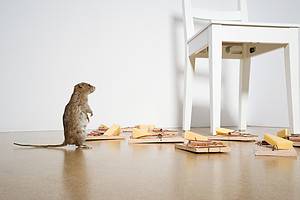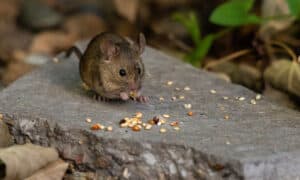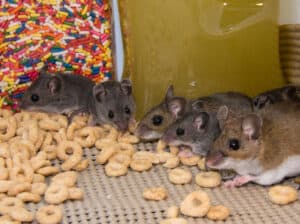Missouri is known for its rolling hills, vibrant cities, and many outdoor activities. But there’s one thing that visitors and residents alike may not realize: Missouri also has its fair share of pests, including rodents. Curious to learn about the rodents in Missouri that are nightmare-worthy? Keep reading!
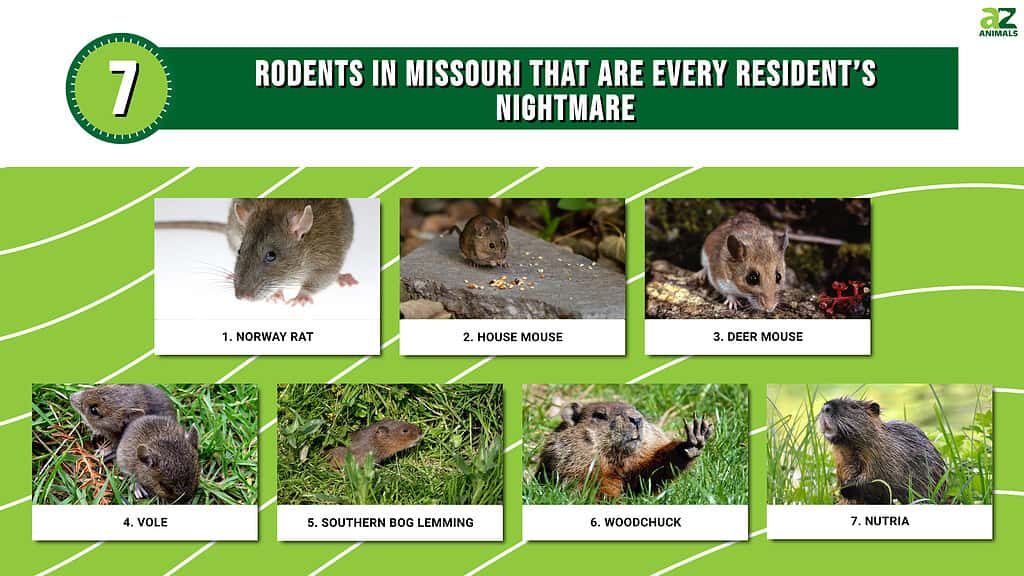
From Norway rats to nutria, these rodents can wreak havoc on our homes, spread disease, and cause property damage.
1. Norway Rat (Rattus norvegicus)
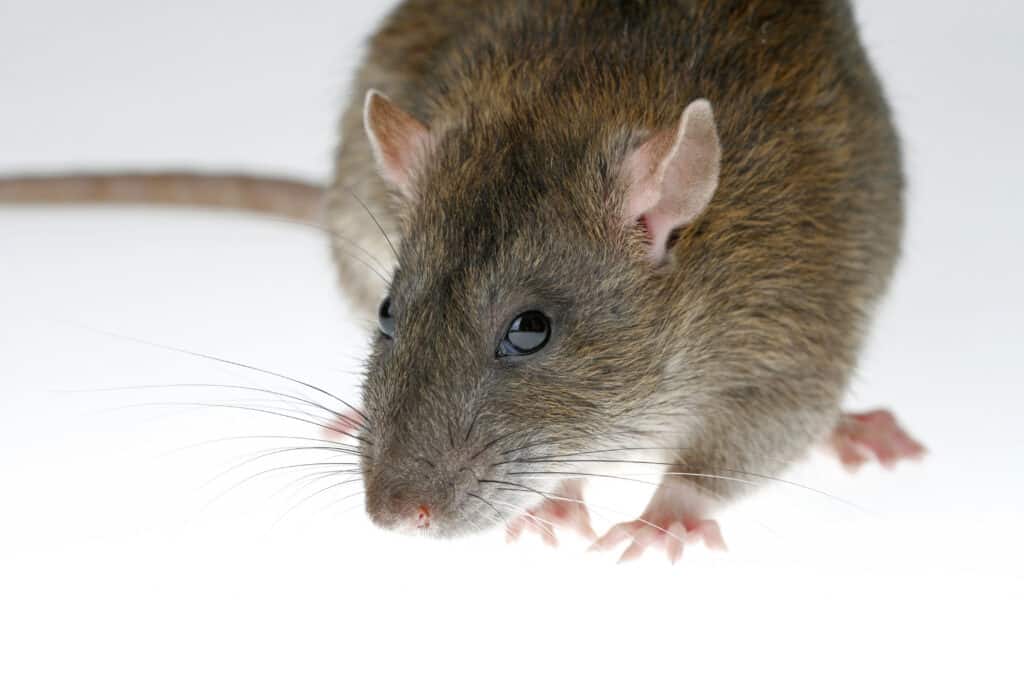
The Norway rat or brown rat is native to China, but due to human travel, has been able to access ships and populate every continent except Antarctica.
©Holger Kirk/Shutterstock.com
One of the most common rodents in Missouri is the Norway rat. These rats have been around since the Middle Ages and have spread to every continent except Antarctica. They are brownish-gray, with pointed noses and scaly tails.
They are midsize rodents, growing up to 16 inches in length. Norway rats can be identified by their thick, almost scaly fur and long tails. They have poor vision but are very sensitive to sound, smell, and touch.
Norway rats are primarily nocturnal but will come out for food and shelter during the day. They are omnivores, eating both plant and animal matter. Norway rats are social creatures; they can live in colonies of up to 200 individuals. They are known to scavenge for food and set up nests near human dwellings.
These rodents are known for their amazing swimming abilities and can dive underwater for several minutes! Furthermore, female Norway rats can produce up to 7 litters yearly, with an average of 8 to 12 pups per litter.
Threat
Norway rats are a significant threat to people in Missouri due to the diseases they can spread through their droppings and urine. They can also cause substantial damage to property as they gnaw on wires, pipes, and walls in search of food or shelter.
These rodents are known for spreading disease, contaminating food and water supplies, destroying property, and even biting humans. They also carry fleas, ticks, and lice that can spread diseases such as typhus, plague, and rat-bite fever.
2. House Mouse (Mus musculus)
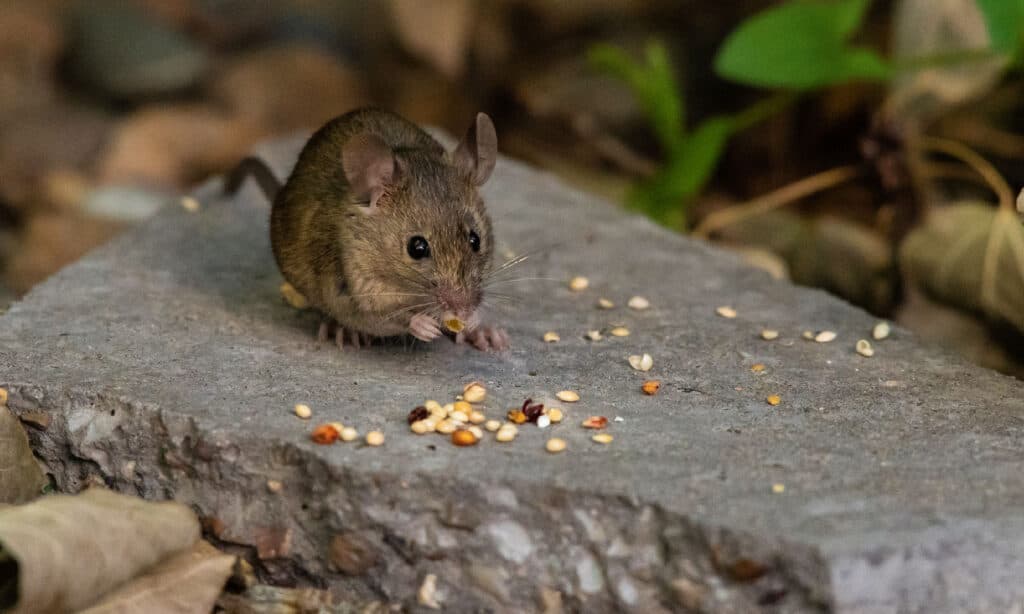
The house mouse is small with greyish-brown to black fur and is usually about 4 inches long.
©iStock.com/Víctor Suárez Naranjo
The house mouse is a common rodent in the United States, and Missouri is no exception. This small mammal can be found in homes throughout the state, causing various problems for its human neighbors – from unsanitary conditions to damage to property.
The house mouse is small with greyish-brown to black fur and is usually about 4 inches long. It has large ears and a rounded snout, with whiskers that help it feel its way around. It has tiny feet and a thin tail about the same length as its body.
House mice are omnivorous, eating both plant and animal matter. They have a high metabolism, which means they eat often and can consume up to three times their body weight in food each day. They prefer grains, nuts, and seeds but eat insects, dead animals, and human food.
House mice are nocturnal and are active at night. They sleep during the day. House mouses usually live in sheltered areas such as attics and basements but may also be found in garages or sheds. They can climb and jump and are good at squeezing through small spaces.
These rodents are prolific breeders, with females able to produce up to 6 litters yearly, with each litter containing up to 10 pups!
Threat
The house mouse is not only an unwelcome guest in our homes but can also cause various issues. They are considered pests due to their ability to spread disease through their droppings and urine and contaminate food sources. They can also cause property damage by gnawing on walls and wires and building nests in attics and other areas of the home.
3. Deer Mouse (Peromyscus maniculatus)
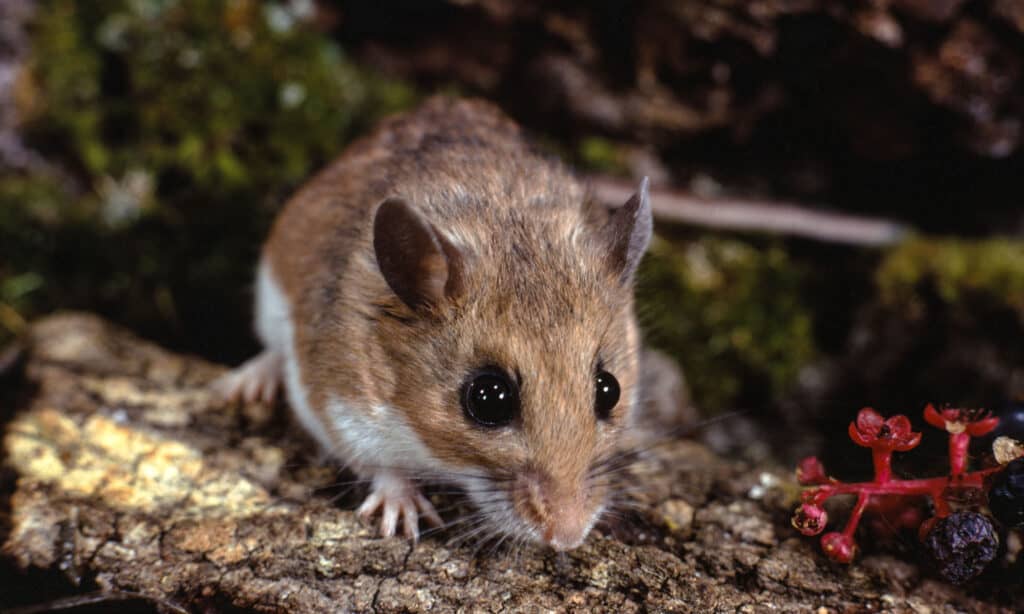
Deer mice prefer to live in grassy areas and fields but are also common around buildings and homes.
©iStock.com/Weber
The deer mouse is a small rodent native to North America and found throughout Missouri with an almost cartoon-like appearance. However, their behaviors and habits can create nightmares for Missouri residents who encounter them.
The deer mouse typically has light brown or gray fur on its back and a white underside. Its tail is usually about the same length as its body, with a white tip at the end. Adults are typically between 4 and 6 inches long, making them larger than house mice. This rodent gets its name from its large eyes and almost similar deer-like color.
Deer mice prefer to live in grassy areas and fields but are also common around buildings and homes. They feed mainly on seeds, nuts, fruits, and insects. During the fall months, they store food for the winter in caches around their habitat.
Like other rodents, deer mice are nocturnal and spend most of their time searching for food. They are also very curious and can be pretty fearless around people, even entering homes searching for food and shelter. In the wild, they tend to live in small family groups of up to 10 mice and share a nest or den.
Threat
The deer mouse is a common sight in Missouri and can pose significant health risks to humans. Some individuals carry hantavirus, a potentially deadly virus that humans can contract through contact with infected mice’s urine, droppings, or saliva. It can also be contracted by inhaling dust particles contaminated with the virus, leading to hantavirus pulmonary syndrome, a fatal respiratory disease.
In addition to the health risks of hantavirus, deer mice can also cause significant property damage. They are known to chew through electrical wires, damage building materials like insulation, drywall, and siding, and spread fleas, ticks, and mites.
4. Vole (Microtus)
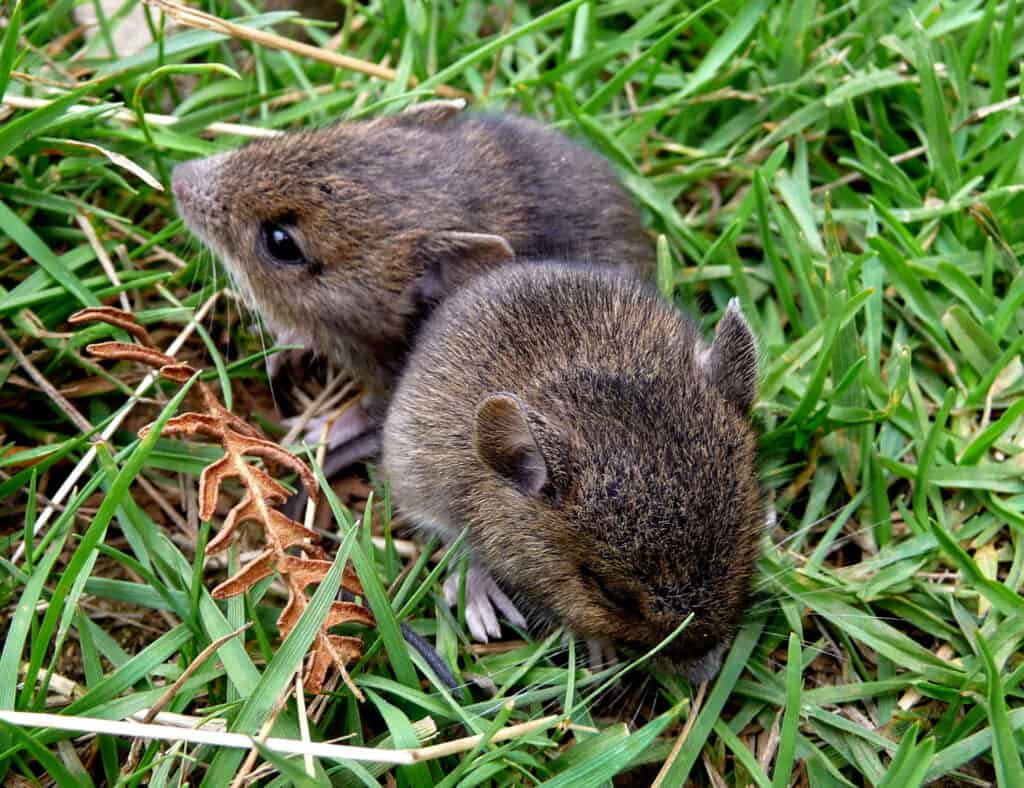
Voles are active mainly at night but can also be seen during the day.
©gailhampshire from Cradley, Malvern, U.K, CC BY 2.0 <https://creativecommons.org/licenses/by/2.0>, via Wikimedia Commons – License
Voles are small rodents that can be found in many parts of Missouri. They look similar to mice but have short tails, small ears, and thick fur. Voles have dark or light brown fur and white patches on their face and back. They can grow up to 10 inches long and weigh around 6 to 8 ounces. Voles are often mistaken for field mice.
Voles are omnivorous, meaning they will feed on various food items. They tend to feed on grasses, plants, roots, and bulbs. They also eat insects, larvae, and other small creatures.
Voles are active mainly at night but can also be seen during the day. They are usually found near streams and rivers with plenty of vegetation, and they tend to build tunnels just below the soil. Voles also dig shallow burrows, which can be up to two feet deep.
Threat
Voles can cause significant damage to property by destroying lawns and gardens. In Missouri, voles cause substantial damage to the state’s crops. They also eat vegetables, fruits, and other crops, which can lead to losses for farmers. They also carry diseases and parasites, such as fleas and ticks, that can affect humans.
However, it’s worth mentioning that voles have a role to play in the ecosystem. They control plant growth, and their tunnels and burrows provide homes for other animals like snakes and insects.
5. Southern Bog Lemming (Synaptomys cooperi)
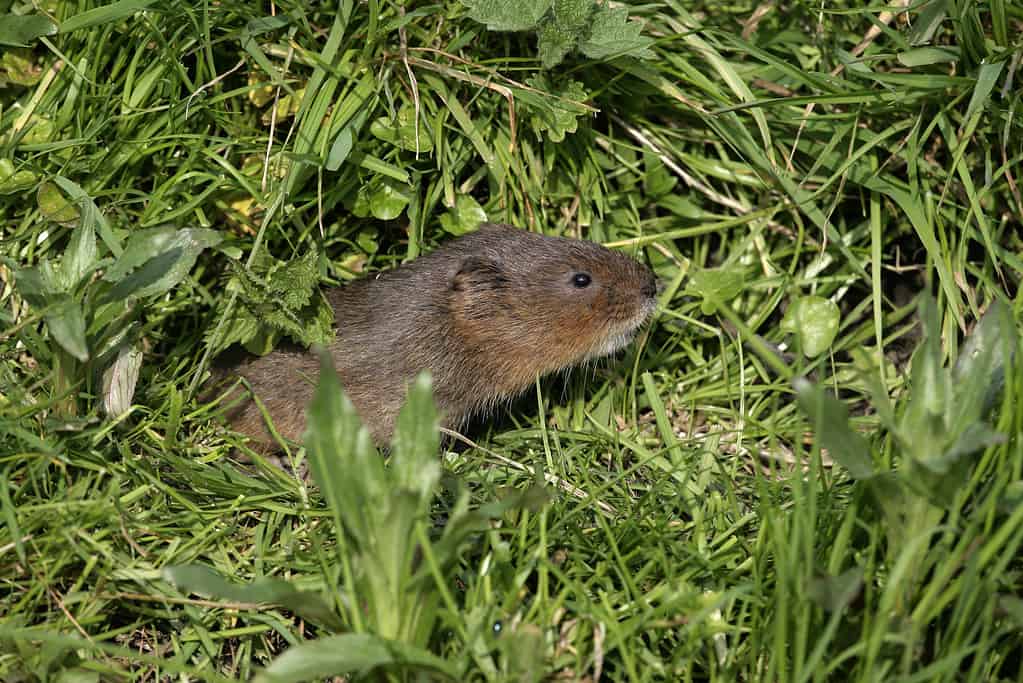
Southern bog lemmings are small, about 4 to 6 inches long, with a reddish-brown fur coat.
©iStock.com/MikeLane45
The southern bog lemming is a small rodent native to Missouri. It is a solitary mammal living in wet or boggy areas. Despite their small size, southern bog lemmings have been creating nightmares for Missouri residents due to their burrowing and tunneling habits, which can lead to property damage.
Southern bog lemmings are small, about 4 to 6 inches long, with a reddish-brown fur coat. They have small ears and long tails used for balance when running. They also have tiny claws that help dig and tunnel through the soil.
Southern bog lemmings are omnivorous and are known to eat insects, spiders, and larvae. They also feed on grasses, leaves, fruit, and other vegetation.
Southern bog lemmings are solitary creatures that prefer to live in wetlands, wet meadows, and other areas with plenty of water. They are active both day and night and do not hibernate in the winter.
Unfortunately, although southern bog lemmings may create some nightmares for humans, it is still important to protect this species in Missouri, as they are an indication of wetland health. Their populations have declined in recent years due to habitat loss and fragmentation.
Threat
Southern bog lemmings’ burrowing and tunneling habits are causing significant issues for Missouri residents. Their tunnels can weaken the foundations of buildings, yards, and roads, and they are also known to eat vegetation from gardens and flower beds. As a result, their presence can cause property damage and ruin yards. They also carry parasites like fleas and ticks, which can be transmitted to humans.
6. Woodchuck (Marmota monax)
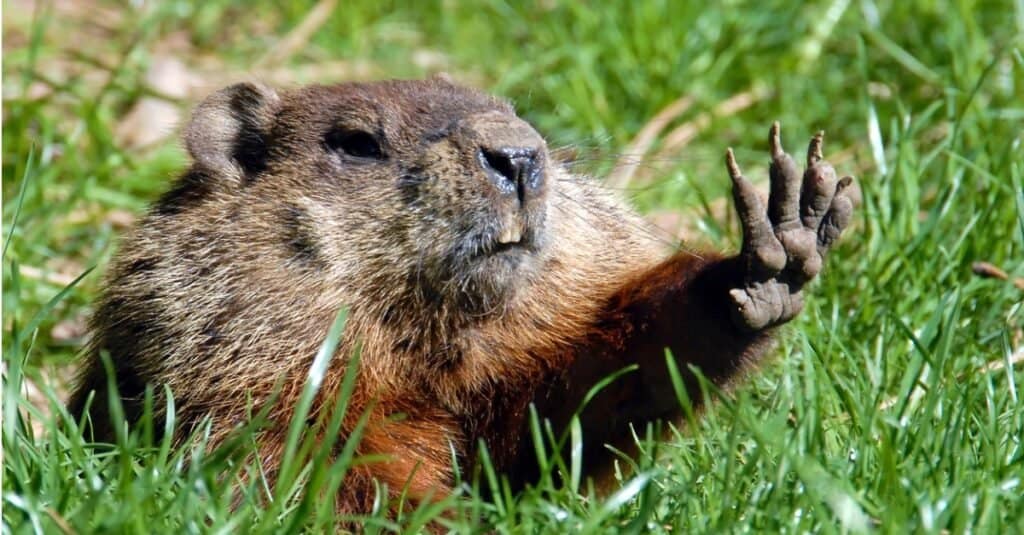
Woodchucks are small rodents that weigh up to 4 pounds and can grow up to 2 feet long.
©iStock.com/mirecca
Woodchucks, also commonly known as groundhogs, are small, burrowing pests that can cause various problems for Missouri residents. These rodents can be found across the United States in both urban and suburban areas.
Woodchucks are small rodents that weigh up to 4 pounds and can grow up to 2 feet long. They often have brown or black fur coats but can also be white. Woodchucks eat primarily nuts, seeds, and insects.
Woodchucks are active primarily at night, and they live in burrows underground. These burrows can be extensive, with multiple entrances and tunnels that can span up to 30 feet long! These rodents are also known to hibernate in the winter months within their underground burrows to save energy until the weather warms up again.
Threat
Woodchucks can cause damage to property by digging deep holes near buildings and foundations, which can weaken the structural integrity of a building. These rodents also habitually enter homes through small openings, making them a nuisance for homeowners.
Woodchucks can also spread disease through their droppings and cause a mess with their foraging habits. These rodents can also carry parasites like fleas and ticks, which can transmit diseases to humans. Additionally, their burrows can attract other animals, such as snakes and skunks, threatening humans and their pets.
7. Nutria (Myocastor coypus)
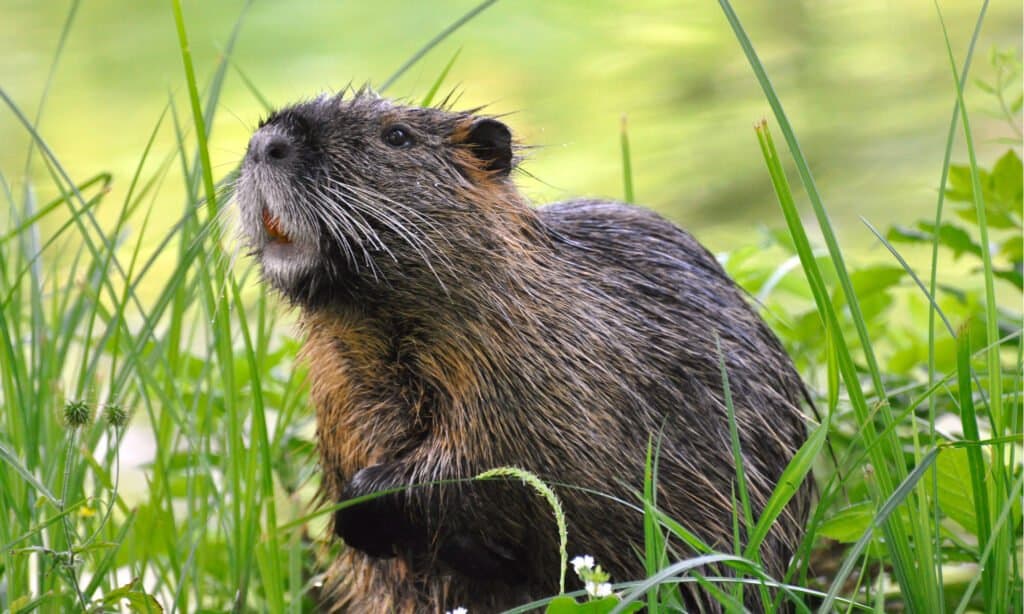
Nutria are known for their orange-stained front teeth.
©Sonja Guijarro/Shutterstock.com
These giant rodents are native to South America but have become a major issue for Missouri residents. They look like large rats, measuring up to 24 inches long and weighing up to 20 pounds!
These semi-aquatic rodents have thick fur that can range in color from brown to grey. Their front feet are webbed, and their large hind feet are used for swimming, while the sharp claws on their front feet are used for digging. Nutria also have a long, narrow muzzle with long whiskers and small ears.
Nutria are herbivores, meaning they feed mainly on plants and vegetation. They like to eat grass, reeds, water plants, grains, and roots.
Nutria can be active at any time of the day and night, but they prefer to feed during the twilight hours. They are typically found near rivers, streams, canals, marshes, and other wet areas.
These rodents are known to reproduce quickly, which has caused issues in areas they have invaded. A female nutria can produce up to 3 litters yearly, and each litter can contain between 1 to 13 young, with an average of 4 or 5. This can very quickly lead to overpopulation.
Threat
The nutria population in Missouri has grown significantly in recent years, and this has caused many problems for residents. These rodents carry diseases that can be transmitted to humans and their livestock, including tuberculosis and leptospirosis.
They are also known to cause significant damage to property. Their burrowing behavior causes erosion and structural damage to levees, dams, embankments, irrigation systems, and other infrastructure.
Summary of 7 Rodents in Missouri That Are Every Resident’s Nightmare
| Rank | Rodent |
|---|---|
| 1 | Norway Rat (Rattus norvegicus) |
| 2 | House Mouse (Mus musculus) |
| 3 | Deer Mouse (Peromyscus maniculatus) |
| 4 | Vole (Microtus) |
| 5 | Southern Bog Lemming (Synaptomys cooperi) |
| 6 | Woodchuck (Marmota monax) |
| 7 | Nutria (Myocastor coypus) |
The photo featured at the top of this post is © gailhampshire from Cradley, Malvern, U.K, CC BY 2.0
Thank you for reading! Have some feedback for us? Contact the AZ Animals editorial team.



